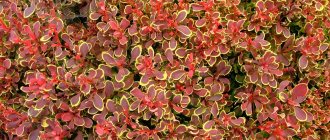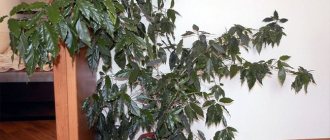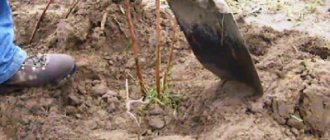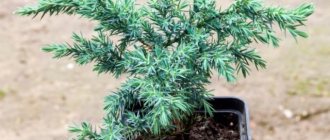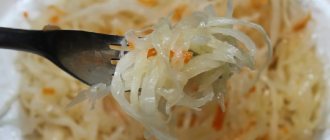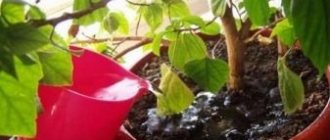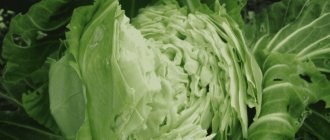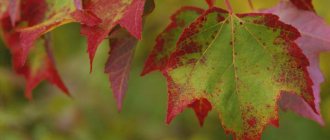Oak leaf in autumn photo
Garden
Oak leaves cannot be confused with any others in the forest. In summer they are so hard, emerald, calm. They won’t rustle for no reason. They will provide shelter from the heat on a hot day. But then autumn comes and oak leaves fly off the branches and fall under your feet. They are no longer green, but they are still so noble. Soon the snow will cover and the oak leaves will sleep until spring.
Oak leaves - an atmospheric photo selection for you. We collect the best photos of oak. Photos of oak leaves on the ground, photos of oak leaves in the grass. Oak foliage on the branches. Oak leaves are beautiful both in summer and autumn.
Let our selection of photos of oak leaves inspire you to go into the forest, wander among the oak groves, take an oak leaf in your hand, and remember its smell.
The page is found by queries:
- oak leaves in autumn photo
- photo of oak leaves
- oak leaf photos
- photo of fallen oak leaves
Oak is a mighty and spreading tree with heavy, thick branches. It grows in the northern hemisphere. It can be found in any European country, including Ukraine and Scotland. There are legends about the longevity of oak to this day. This tree lives for 500 years or longer, and its height reaches up to 40 m. In summer it is decorated with a crown of light green carved leaves, and in autumn it looks completely different.
Pictures of leaves
When many people mention an autumn park, a picture from a botany textbook with an image of an oak leaf appears before their eyes. There are also those who collect herbariums and even keep special albums. But you can also sketch it in your sketchbook.
If desired, in the fall everyone will be able to try themselves as an artist. You need to go to the park, collect oak leaves there and create a whole collage.
To make it easier to draw a leaf, you can simply trace it on paper with a pencil, like a template. And then everything depends solely on imagination and artistic skills.
For example, you can color the drawing with watercolors, pencils or felt-tip pens. And you can take any shades - you can find many photos and drawings that will suggest the palette option.
We recommend that you read: The harm and benefits of viburnum for human health
If the color of summer leaves varies from light to dark green, then in autumn brown, brownish, yellow, and bright red shades are possible. At the same time, the veins always seem darker, and sometimes they are contrasting. A little patience and the picture will be ready.
What does an oak tree look like in autumn?
The oak, which can be found in the forest in autumn, does not lose its amazing beauty.
It changes the color of the foliage from green to bright yellow. In the first autumn months its leaves are amber-yellow. Closer to winter they dry out and turn brown. By October, many forest trees shed their bright colors and remain completely bare. The autumn oak tree is in no hurry to part with its foliage. Even if its leaf becomes dry and brown, it holds tightly to the branches, remaining on them until next spring.
If a tree grows in the thicket of a forest, it is crowded among other deciduous plants. Its trunk begins to stretch and thin. But if it grows in a spacious clearing, it becomes a mighty handsome man. Its trunk is thick, so the tree looks squat and stocky. Its branches, spreading in different directions, form a lush crown, decorated with carved foliage.
When a person encounters such an oak tree in the fall, a desire may awaken in his soul to describe it and share his impressions with friends. Many people, amazed by the beauty of this tree, post beautiful photos on the Internet: sometimes ordinary words are not enough.
Deorevo grows strictly vertically, and its roots go deep into the soil, supporting the oak in an upright position. It withstands attacks from caterpillars and other harmful insects. Even if they completely destroy its foliage, the mighty hero will still survive and grow a new lush crown.
If the tree is cut down, after a while new leaves will appear on the stump. They will quickly turn into shoots that will reach for the sun. The strongest branch in the future will become the trunk of a new oak tree.
Why do leaves change color in autumn?
With the onset of autumn, trees and shrubs decide to change the emerald color of their leaves to brighter and more unusual colors. At the same time, each tree has its own set of pigments—“colors.” These changes occur because the leaves contain a special substance, chlorophyll, which converts light into nutrients and gives the foliage its green color. When a tree or shrub begins to store moisture and it no longer reaches the emerald leaves, and the sunny day becomes much shorter, chlorophyll begins to break down into other pigments, which give the autumn world crimson and golden tones.
The brightness of autumn colors depends on weather conditions. If the weather is sunny and relatively warm, the autumn leaves will be bright and variegated, and if it rains often, they will be brown or dull yellow.
Types of oak
Many oak trees, despite autumn, remain covered with brown-yellow leaves that hold tightly to the branches.
What is their secret? There are different types of these trees. People distinguish them as follows: winter oak and summer oak. The summer forest blooms its leaves along with other trees. It falls in October-November. The rough-legged foliage appears much later and lasts longer. When the first frosts come, it dries up, turning into an amazing herbarium created by nature itself. Dried leaves continue to hang on the branches, unaffected by winds and other bad weather. In our latitudes there are 19 varieties of these trees. Buzzards and summerbirds are common in the regions of central Russia. There are oak trees that are firmly rooted on the rocks. They are called rocky or sessile flowers. The crown of the rock tree grows high and straight, and the trunk is much thinner than that of its forest counterparts. Sessile oak grows up to 30 m in height and lives for about 800 years. It can be found on any hilly hill in the form of a separately growing tree.
Red oak is found in North America. Its foliage is thin and shiny, with deep grooves. On each side of the leaf sharp edges-blades are visible.
There are also these trees:
- weeping;
- swamp;
- petiolate;
- Georgian;
- long-legged;
- chestnut-leaved;
- Mongolian.
Main types of mighty oaks
The genus includes up to five thousand (and maybe more) varieties of this tree, known to everyone.
Oaks of Russia
Petiolate (Quercus robur) is a traditional representative for Russia and Western European countries.
- Resistance to large temperature changes;
- Tolerance to prolonged drought;
- Wind resistant.
Prefers good fertile soil. In field conditions, the plant reaches 50 meters in height. In group plantings, individuals are lower, the crowns are located in the upper part of the trunk, which ensures high light-loving properties. The leaves are large - up to 15 cm in length. English oak is considered a long-liver - the age of individual individuals is 1500 years with an average life expectancy of 300-500 years.
Chestnut-leaved oak is a rare representative of the genus, listed in the Red Book. It was actively felled for use for construction purposes - its wood is highly frost-resistant and hard. The trunk can stretch up to 30 meters, the crown has the shape of a tent. The leaves with pointed triangular edges are similar to the foliage of the chestnut tree, from which the species gets its name.
In Russia, the chestnut-leaved plant is found in deciduous forests and in artificial park areas. Active work is underway to restore the population of this species.
Large anther oak grows in the southern mountainous regions of the Caucasus. Artificially planted in park areas.
- Short leaf (up to 8 cm) with blunt blades;
- Photophilia;
- Slow growth;
- Resistant to drought and frost.
Mongolian oak has an attractive decorative appearance, for which landscape designers love it. In Russia, the tree is planted in alleys as an array or tapeworm on plots of land.
The leaves of the representative are elongated, reaching 20 cm. In summer, their color is dark green, at the beginning of falling - bright brown. The tree grows well in light partial shade.
Gartvis oak (Armenian) begins its genus in the Western Caucasus. The leaves are obovate, with up to 12 rounded pairs. Acorns form and develop on long stalks. Due to the characteristics of their origin, they love moderate shade, humidity, warm temperatures, and fertile soil. It does not tolerate winter well, so it cannot grow in colder regions.
American oak genus
The following plant varieties originate on the American continent:
Red is a bright powerful tree up to 30 (sometimes 50) meters high. The trunk diameter reaches 1 meter. A distinctive feature is the specific color of the leaves: after blooming they have a reddish base, in summer they are bright green, in autumn they acquire a crimson or bright brown hue. In other characteristics, the tree is similar to the Russian petiolate representative of the genus.
Oak bark
Oak bark contains tannins, which are used in medicine and the leather industry. In Russia, leather was treated only with oak bark. The processing of leather is called tanning. This word began to be used even if the skin was treated with other compounds (willow bark or chrome salts).
Oak bark has the following beneficial properties:
- relieves inflammatory processes;
- heals wounds;
- treats stomach diseases (if you use its decoction);
- eliminates allergic reactions;
- helps with colds;
- heals gums.
For medicinal use, oak bark is collected in the spring. After collection, it is dried for 2-4 days. It must be stored dry and brittle.
Beneficial features
Not only oak bark has beneficial properties. For example, acorns are used to treat intestinal disorders, hernias and skin diseases.
Oak foliage smells pleasant and is an obstacle to the development of rot. Fragrant bath brooms are made from tree branches. The leaves are used to line tubs intended for pickles. The preparations do not sour and become especially tasty.
You can also make children's crafts from acorns. Acorns look very beautiful: they have a round shape and a pleasant glossy shine.
Autumn oak is an amazing sight. A mighty crown of yellow foliage pleases the human eye. When the leaves of the buzzards dry out, they remain on the branches, attracting attention with a quiet and mysterious winter rustle.
In summer, all the leaves of the trees are green. But when summer ends and golden autumn comes to us, they acquire different colors: red, bright yellow and brown. Of course, these are not all the colors that appear in the forest or park with the onset of autumn. For example, poplar leaves are painted with small brown spots. Maple leaves are bright yellow at the beginning of autumn, and become dark brown closer to winter. And the chestnut foliage is like yellow stars with a red-burgundy edge.
Leaf fall - seasonal renewal: oak, rowan, poplar, apple tree
Katerina, Voronezh city
Tell me, when does the leaf fall period end for apple trees and rowan trees?
Leaf fall is a seasonal phenomenon in the life of trees and shrubs, which is observed in early autumn. By getting rid of leaves before the onset of winter cold, trees regulate the process of moisture consumption, significantly reducing its need. The process of leaf fall in different trees begins and ends at different times. This largely depends on weather conditions and the area where green spaces are grown, as well as the types of trees and their age.
It is difficult to unequivocally answer the question of when leaf fall ends. It has been noticed that poplars lose their leaves first, then oaks and rowan trees. Apple trees are slowly losing their leaves, and even in winter, single leaves on some trees continue to flutter in the cold wind.
Apple tree in autumn
Trees at the time of leaf fall
Dropping leaves from trees serves another purpose - the crown under the snow cover has significant weight. Tree branches, especially young ones, are unable to withstand such a load. Fallen leaves help reduce the load on the skeletal branches of the tree, protecting the crown from damage.
Thanks to the process of photosynthesis, a large amount of harmful substances accumulate in the leaves by the beginning of autumn, which are removed with the beginning of leaf fall along with fallen leaves.
The end of leaf fall in different tree species
Poplar During leaf fall, mature poplar trees lose a third of their leaves in the period from September 15 to 20; in the first ten days of October, up to 10% of the foliage remains in the poplar crown. Poplar leaves are completely lost by mid-October. Young poplars remain green longer than older trees; they later turn yellow and shed their leaves.
Oak The fall of oak leaves begins in the first half of September; after about 30 days, the trees completely lose their leaves. With early frosts, the timing of the end of leaf fall on oaks is reduced - trees quickly lose leaves at sub-zero temperatures. Oak leaves immediately turn brown, and ripe acorns fall off the tree along with the leaves.
Autumn oak
Rowan Autumn rowan is as if painted with watercolors, its leaves do not turn yellow, but acquire a pink color, the process of leaf fall begins around the beginning of October, and ends by November 1.
Folk omens note that as soon as the mountain ash leaves fall, a stormy time begins - the pre-winter period, with a dank cold wind and short days. And for a long time, red berries will bloom on the bare rowan branches covered with snow, which feed the hungry birds in winter.
tree The apple tree begins to turn yellow by the 20th of September, and the first yellow leaves appear in the crown of the tree. Leaf fall of apple trees begins in the third decade of September and ends in the second half of October. When all the leaves have fallen off, you can carry out preventative pruning of the apple trees.
Rowan in autumn: video
What does oak look like in autumn?
The majestic oak tree with its powerful spreading branches can reach 40 meters in height and live for about 800 years. A huge number of birds and insects find shelter and food in its crown.
The common or European oak (Quercus robw) grows in the temperate zone of the Northern Hemisphere. This mighty deciduous tree is found throughout Europe - from Spain in the west and south to Ukraine in the east and Scotland in the north. Oak is a forest long-liver, living for about 800 years and reaching 40 meters in height. From the upper crown to the tips of the roots, the length of which is often commensurate with the height of the tree itself, all layers of this giant are densely populated throughout the year.
Spring Awakening
The end of hibernation and the beginning of a new life cycle is marked by the appearance of young leaves on the oak tree. At the same time, insects wake up, the presence of which, in turn, attracts various insectivorous birds and animals. Of the leaf-eating insects, leaf roller caterpillars are the most common on trees in May. Attaching themselves to the branches with silky threads, they begin to destroy young foliage. The webs they weave are an ideal place for growing colonies of caterpillars and larvae of other insects.
Larger stem pests include more than 100 species, the names of which usually indicate their habitat: oak borers, oak sapwood, oak variegated longhorned beetle, etc. In most cases, the protective coloring of caterpillars saves them from numerous birds that are more active at this time . Grasshopper warblers, common and blue tits, chaffinches, and forest songbirds circle above the top of the crown, and in the middle, as a rule, bullfinches and kinglets fly. In the bark of a massive trunk, nuthatch, woodpecker and common pika are looking for insects.
A robin and a blackbird settled down below, ready to pick up anything that fell to them from the upper branches. At night, bats, hedgehogs, male woodcock and deer gather around the oak tree to feast on caterpillars and insects. The tawny owl, which hunts birds, rodents and small mammals, also does not sleep.
Camel larvae are hiding under the lichen that has grown on the trunk. In the dry bark of a tree, bark beetles, stag beetles and other Coleoptera make internal tunnels and lay eggs. Unless a woodpecker finds the larva, it will eventually turn into an adult insect. This is the kind of invasion an oak tree has to withstand when spring arrives.
Regrowth of greenery
The young leaves destroyed by the larvae are replaced by new bronze-colored foliage. which gradually turns green. The warm rays of the spring sun, freely penetrating between the branches of the oak tree, awaken the first flowers to life: primroses, anemones and violets. In May, a carpet of bluebells blooms in the clearing.
However, the oak truly appears in all its grandeur in the summer months, despite that. that drought is a difficult test for such a giant. Like most plants, the growth and maintenance of this tree is ensured by the process of photosynthesis, due to which energy is produced in green leaves under the influence of sunlight. A powerful root system supplies the tree with moisture and nutrients in abundance: for example, in one hot day, an oak tree can absorb more than 450 liters of water.
Message about the oak tree. What you need to know about oak
Oak in the open
In Rus', oak has always personified strength and power. It is considered a special tree endowed with masculine energy. In lean years, peasants used oak fruits - acorns - in cooking and fed domestic animals. Oak wood is considered a valuable building material.
There are about 450 species of oak on earth, which are distributed mainly in the northern hemisphere. In the European part of Russia, almost one type of oak grows - pedunculate oak or common oak. Mongolian oak grows in the Far East.
Description of common oak
The common oak is a deciduous tree. It grows up to 40 meters in height, and can reach 2 meters in diameter. There are trees known in nature that are more than 1000 years old. An oak tree growing in open spaces has a spherical crown. In the forest, the oak tree grows tall and has a straight, tall trunk.
Oaks in the forest
Oak roots are branched and powerful. The bark of young trees is smooth and brown. In old trees, gray, in cracks. Leaves on oak appear later than on other deciduous trees.
Oak leaves
It begins to bloom as soon as the leaves turn green. Oak flowers are small and inconspicuous.
Both male and female flowers appear on the same tree. Male flowers are dangling “earrings” of yellowish-green color. These flowers hang in bunches from oak branches.
Male oak flowers. From freely available sources
Female flowers are very small, raspberry-red in color, located at the end of young branches.
Female and male oak flowers. From freely available sources
In place of female flowers, fruits grow - acorns. Acorns ripen in the fall, at the end of September, October.
Green acorns
Acorns serve as the main material for oak propagation, and are also eaten in large quantities by rodents.
Common oak is an unpretentious tree, it is frost-resistant and drought-resistant.
Shipov forest
The greatest predominance of common oak is observed in forests located in the southern part of the forest-steppe zone. One of the oak forests, with a predominance of oak, located in the Voronezh region, is the Shipov Forest.
The forest of thorns is famous for its ship oaks. Trees were harvested here for the construction of the first ships of the Russian fleet. The founder of the fleet, Peter 1, called the Shipov Forest “The Golden Bush of the Russian State.” The name of the forest is also associated with the fleet, in English ship - ship.
The Thorn Forest is also famous for its “Ideal Oak”. A slender, straight tree without knots, 35 meters high, with a crown with a diameter of 18 meters, located at the very top of the tree. This and other similar trees are about 200 years old.
Perfect oak
Unfortunately, at present the ideal oak has already dried up, but I think it won’t be difficult to find another similar oak.
In addition to the perfect oak tree, the thorn forest contains oak trees that are over 400 years old.
How is oak useful?
Oak has many economic and medical uses.
Wood has valuable consumer properties:
- durable;
- has high moisture resistance, resistance to rotting and fungal infections;
- has a beautiful texture;
For a long time it served as the main building material for the construction of houses and outbuildings in villages. And in our time it is used in the construction of cottages. Oak parquet floors are widely known. Oak wood is also in demand in the furniture industry.
Dark-colored furniture made from bog oak is especially valued. Bog oak is oak trees that have been kept in water for a long time and dried using a special technology.
What does an oak tree look like in autumn?
The oak, which can be found in the forest in autumn, does not lose its amazing beauty.
It changes the color of the foliage from green to bright yellow. In the first autumn months its leaves are amber-yellow. Closer to winter they dry out and turn brown. By October, many forest trees shed their bright colors and remain completely bare. The autumn oak tree is in no hurry to part with its foliage. Even if its leaf becomes dry and brown, it holds tightly to the branches, remaining on them until next spring.
If a tree grows in the thicket of a forest, it is crowded among other deciduous plants. Its trunk begins to stretch and thin. But if it grows in a spacious clearing, it becomes a mighty handsome man. Its trunk is thick, so the tree looks squat and stocky. Its branches, spreading in different directions, form a lush crown, decorated with carved foliage.
When a person encounters such an oak tree in the fall, a desire may awaken in his soul to describe it and share his impressions with friends. Many people, amazed by the beauty of this tree, post beautiful photos on the Internet: sometimes ordinary words are not enough.
Deorevo grows strictly vertically, and its roots go deep into the soil, supporting the oak in an upright position. It withstands attacks from caterpillars and other harmful insects. Even if they completely destroy its foliage, the mighty hero will still survive and grow a new lush crown.
If the tree is cut down, after a while new leaves will appear on the stump. They will quickly turn into shoots that will reach for the sun. The strongest branch in the future will become the trunk of a new oak tree.
Types of oak
Many oak trees, despite autumn, remain covered with brown-yellow leaves that hold tightly to the branches.
What is their secret? There are different types of these trees. People distinguish them as follows: winter oak and summer oak. The summer forest blooms its leaves along with other trees. It falls in October-November. The rough-legged foliage appears much later and lasts longer. When the first frosts come, it dries up, turning into an amazing herbarium created by nature itself. Dried leaves continue to hang on the branches, unaffected by winds and other bad weather. In our latitudes there are 19 varieties of these trees. Buzzards and summerbirds are common in the regions of central Russia. There are oak trees that are firmly rooted on the rocks. They are called rocky or sessile flowers. The crown of the rock tree grows high and straight, and the trunk is much thinner than that of its forest counterparts. Sessile oak grows up to 30 m in height and lives for about 800 years. It can be found on any hilly hill in the form of a separately growing tree.
Red oak is found in North America. Its foliage is thin and shiny, with deep grooves. On each side of the leaf sharp edges-blades are visible.
There are also these trees:
- weeping;
- swamp;
- petiolate;
- Georgian;
- long-legged;
- chestnut-leaved;
- Mongolian.
Description of oak leaves
Oak species are distinguished by leathery leaves. But there are evergreens on which the foliage remains for several years, and there are those on which they fall every year. Moreover, in some cases, oak leaves do not fall, but dry out, but remain on the branches, and over a period of time their gradual destruction occurs.
The average size is 7-15 cm. However, in large-leaved varieties the length reaches up to 40 cm, and the width is at least 25 cm. Such giants are rarely found in city parks. Some varieties have solid edges, others have carved edges, and still others have lobed edges.
In Russia, the most common is the pedunculate oak - a deciduous tree that reaches a height of 50 m. Even city residents have often seen this oak in parks, the leaves of which have a dark green tint. Botanists describe them as petiolate and lobed, and their structure as leathery. At the same time, they differ both in size and shape.
Greens are distinguished by reticulate venation (also called pinnate). On such specimens one can distinguish the main vein, which is quite powerful and clearly distinguishable visually. It runs through the middle - you can see it in any photo. Small veins radiate from it.
They create branches that form a network - hence the name of such venation. But since more large (although not so deep) veins extend from the main vein to the right and left, they give the leaf a resemblance to a feather. Therefore, sometimes the venation is called pinnate.
Oak bark
Oak bark contains tannins, which are used in medicine and the leather industry. In Russia, leather was treated only with oak bark. The processing of leather is called tanning. This word began to be used even if the skin was treated with other compounds (willow bark or chrome salts).
Oak bark has the following beneficial properties:
- relieves inflammatory processes;
- heals wounds;
- treats stomach diseases (if you use its decoction);
- eliminates allergic reactions;
- helps with colds;
- heals gums.
For medicinal use, oak bark is collected in the spring. After collection, it is dried for 2-4 days. It must be stored dry and brittle.


